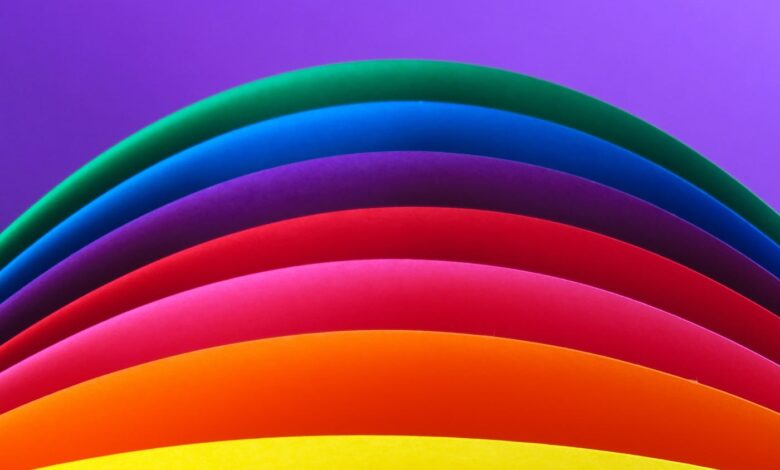The Psychology of Color in Graphic Design

Graphic Design is a very powerful tool for controlling what people think about themselves or how they feel at any given time.
Many businesses can benefit from the power of color psychology in their marketing materials. To create truly impactful designs, consider partnering with a creative graphic design agency.
Among all the materials used by the designers, hues are essential in making meanings and influencing behaviors. Understanding color psychology is therefore crucial for each graphic designer with an intention to producing not only attractive but also functional designs.
The Basics of Color Psychology:
COLOR PSYCHOLOGY is the study of how humans’ emotions and behavior are affected by color. Different hues, shades, and combinations can change our perception of things around us. Colors can be stimulating or soothing, for example; they can be exciting or tranquilizing. By knowing this fact designers may choose appropriate colors according to the target group’s aim.
The Meaning of Colors:
1. Red: In most cases, red is associated with enthusiasm, heat and forcefulness of will which are elements of energy. This shade is often employed in designs that want to attract attention to themselves or communicate overpowering concepts. On the other hand, it also symbolizes danger or alertness.
2. Blue: In the sphere of hues, blue stands for self-assurance, harmony and expertise. It is common in commercial logos because it is interpreted to refer to acceptability. Lighter shades can have calming effects, while deeper colours could represent sophistication or affluence.
3. Green: Nature, growth, and health are all related to the color green. Because of this, it is widely used for any design that deals with environment, well being or even banking. Additionally, it can express freshness and renewal.
4. Yellow: Famed for its bright and joyful nature, yellow is linked with happiness and hope. It is a color that can grab someone’s attention right away yet too much exposure may increase people’s worries or anger towards it.
5. Purple: Purple is a color that combines the peacefulness of blue and the vitality of red hence it signifies creativity, wealth and secrecy. Most designs that want to portray elegance or wonder often use this color.
6. Orange: Orange brings to mind a sense of excitement and warmth, making it a symbol for creativity as well. It evokes feelings of enthusiasm that can be found in adventures or innovations. Similar to red, orange can grasp your attention but in a much softer way.
7. Black: The color black possesses an inherent adaptability, and is often associated with sophistication, power as well as elegance. Black is also commonly employed in the representation of formality and permanence. However, this hue may elicit a sense of enigma or pessimism if its applications are excessive.
8. White: White may represent chastity, simplicity, and hygiene. In design it is frequently employed to produce an airy and minimalist ambiance. Also white can stand for starting afresh or transparency.
Cultural Influences on Color Perception
It’s important to note that color perceptions can vary significantly across different cultures. For example, while white is often associated with purity in Western cultures, it can symbolize mourning in some Eastern cultures. Designers must consider the cultural context of their target audience to ensure that their color choices align with the intended message and do not inadvertently convey unintended meanings.
Color Combinations and Contrast
In addition to individual color meanings, the combination of colors and the contrast between them play a crucial role in design effectiveness. Complementary colors (those opposite each other on the color wheel) can create dynamic and eye-catching contrasts, while analogous colors (those next to each other on the color wheel) offer a more harmonious and cohesive look.
Designers often use color schemes to establish visual hierarchy and guide the viewer’s attention. By strategically using contrast, they can emphasize important elements and create a balanced composition that enhances readability and engagement.
The Emotional Impact of Color in Branding
In branding, color choices can significantly impact consumer perceptions and brand recognition. Many successful brands have strong associations with specific colors, which become integral to their identity. For example, Coca-Cola’s red evokes excitement and energy, while IBM’s blue signifies trust and professionalism.
Color consistency across all brand materials helps reinforce brand identity and ensures that the intended message is consistently communicated to the audience. Designers must carefully consider how colors align with brand values and the emotions they wish to evoke in their target audience.
Conclusion
The psychology of color in graphic design is a powerful tool that influences how people perceive and interact with visual content. By understanding the emotional and cultural implications of different colors, designers can create impactful and meaningful designs that resonate with their audience. Whether aiming to convey excitement, trust, or creativity, thoughtful color choices can enhance the overall effectiveness of a design and contribute to its success.
For those seeking to learn more about implementing color psychology into their brand identity or marketing materials, consider collaborating with a best graphic design agencies.





